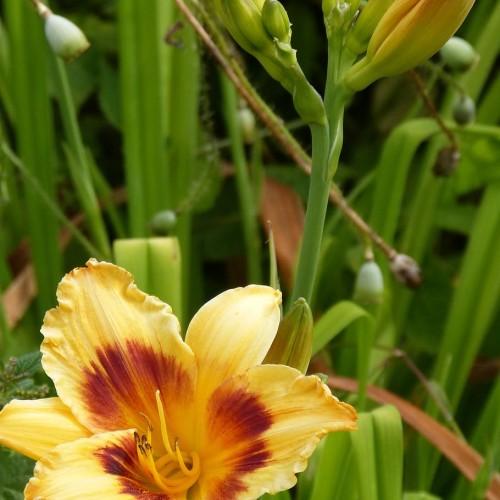
daylily
Hemerocallis 'Eye Yi Yi'
Cycle:
Herbaceous Perennial
Watering:
Average
Hardiness Zone:
3 - 9
Flowers:
Flowers
Sun:
Full sun,part shade
Leaf:
Yes
Growth Rate:
Low
Maintenance:
Low
Drought Tolerant:
Yes
Salt Tolerant:
Yes
Care Level:
Medium
watering
Daylilies require consistent watering for healthy growth and blooms. During the first year, water when the soil is dry to the depth of 1 inch, approximately 2 times per week. Once it is well established, the plant can tolerate periods of drought. For best results, water the plants early in the morning. During the summer, water the daylilies every 5 to 7 days if there is no rainfall, making sure to moisten the entire rootball and water off the foliage. Reduce watering in the fall when the foliage begins to turn yellow.
sunlight
The daylily (Hemerocallis 'Eye Yi Yi') does best when it receives about 6 to 8 hours of direct sunlight each day. While the plant can survive in partial shade, it will produce more vibrant blooms and grow best when it has plenty of sunshine. In the hottest months, the plant can benefit from some afternoon shade. It is also important that the location is well drained to avoid soggy soil and potential root rot.
pruning
Daylily (Hemerocallis 'Eye Yi Yi') should be pruned each year in late fall, when it begins to go dormant. You should cut back the foliage to just a few inches above soil level. This will help prevent the spread of diseases and encourage strong, new growth. For additional maintenance, and to control the size and shape of the plant, you should remove any dead or damaged foliage and spent flower stalks when they appear. You may also wish to remove any offshoots or crowding foliage, as well as deadheading blooms to help stimulate future flowering.
